140 CD / The Welte Mignon Mystery: Dead or Alive
The Welte Mignon Mystery Vol. IV
Dead or Alive
Frédéric Chopin
Études op. 10, op. 25
Horowitz, Lhévinne, Ney, Pachmann, Paderewski, Schnabel, Serkin and others today playing their 1904-1928 interpretations and in addition Peter Orth playing today
EAN/barcode: 4009850014003

Description
This is not an historical recording. Yet mysteriously the music is performed in an interpretation which is historically authentic down to the last detail. The key to this mystery is: the original performer was present at the recent recording session, but not physically: the music is heard on a modern Steinway. Never has music stored in the Welte-Mignon system sounded so "right" or so well. Thanks to TACET′s much-praised recording technique, and because the Welte-Mignon memory system and sound production mechanism have now been newly adjusted for the first time by the leading expert in the field - and are thus able to meet TACET′s requirements. (Welte-Mignon was invented in 1904.) The Welte-Mignon mystery can now speak to us without distortion.
4 reviews for 140 CD / The Welte Mignon Mystery: Dead or Alive
You must be logged in to post a review.

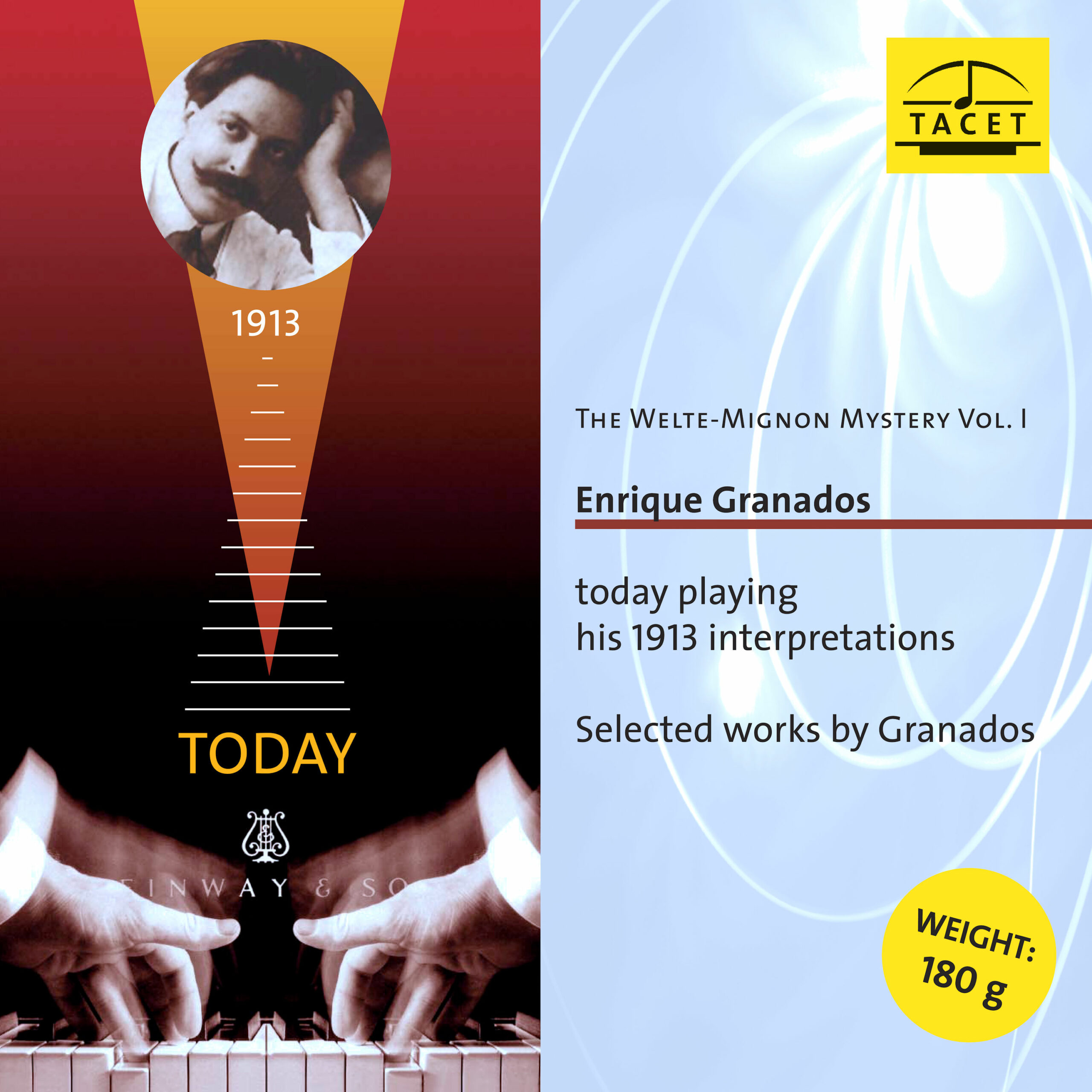
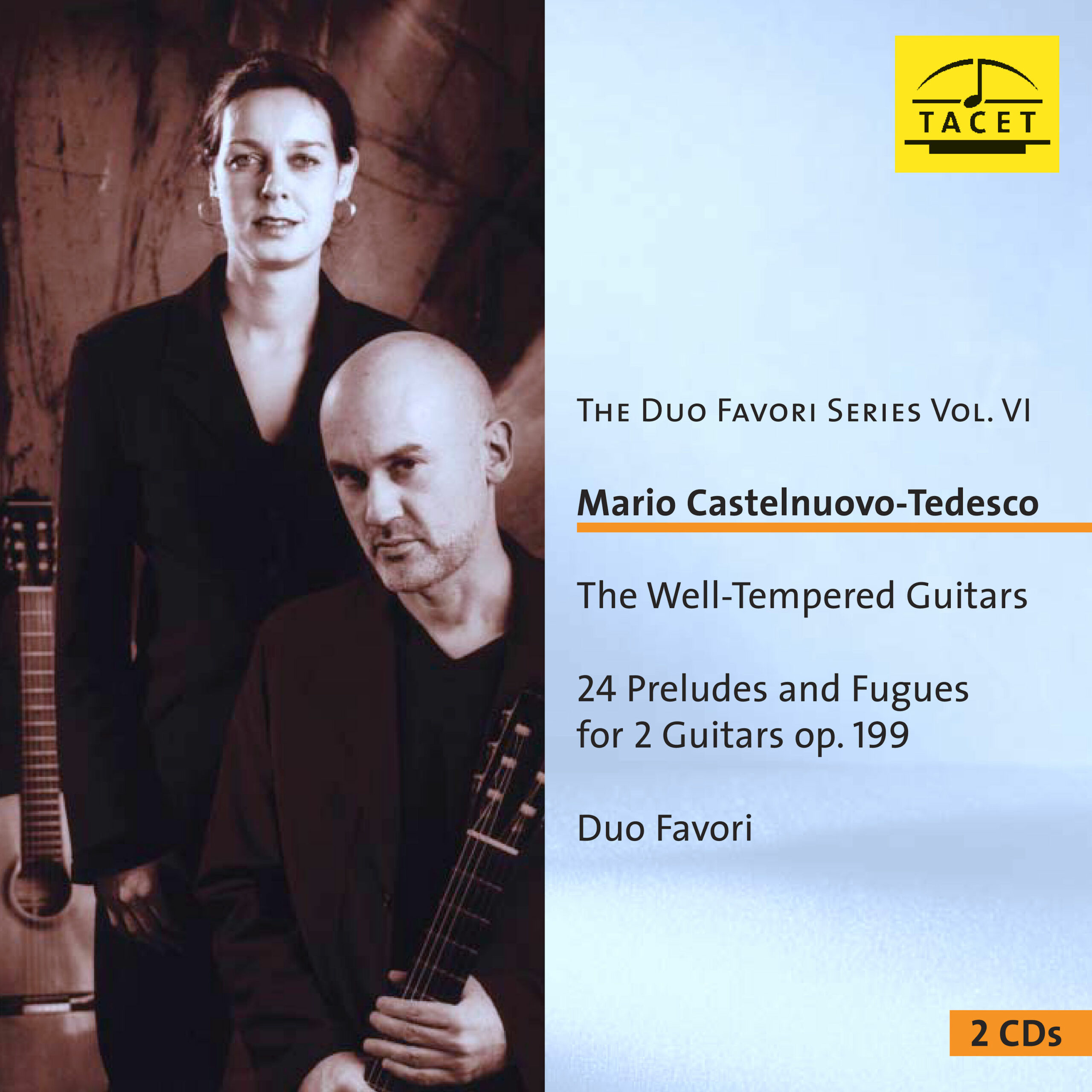
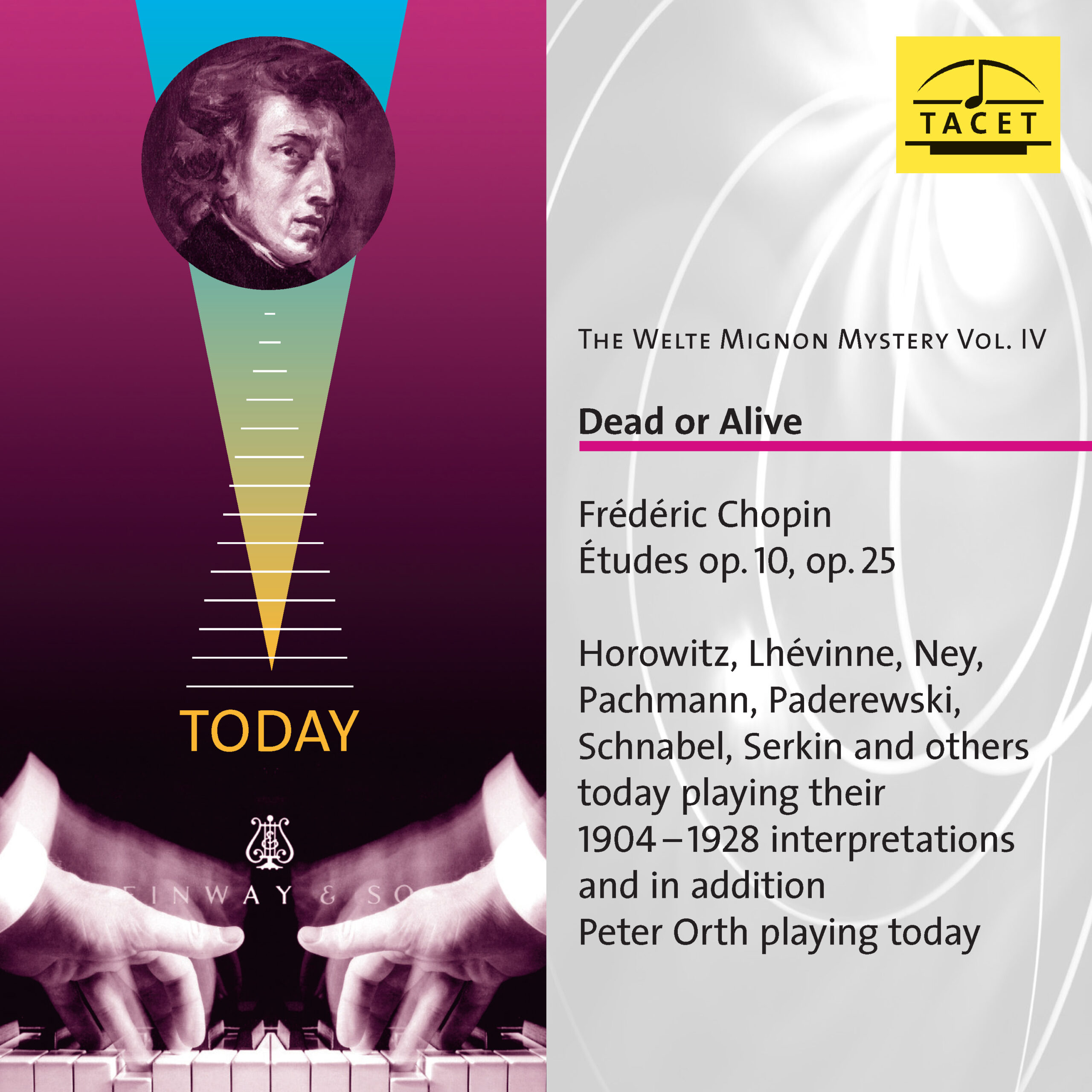
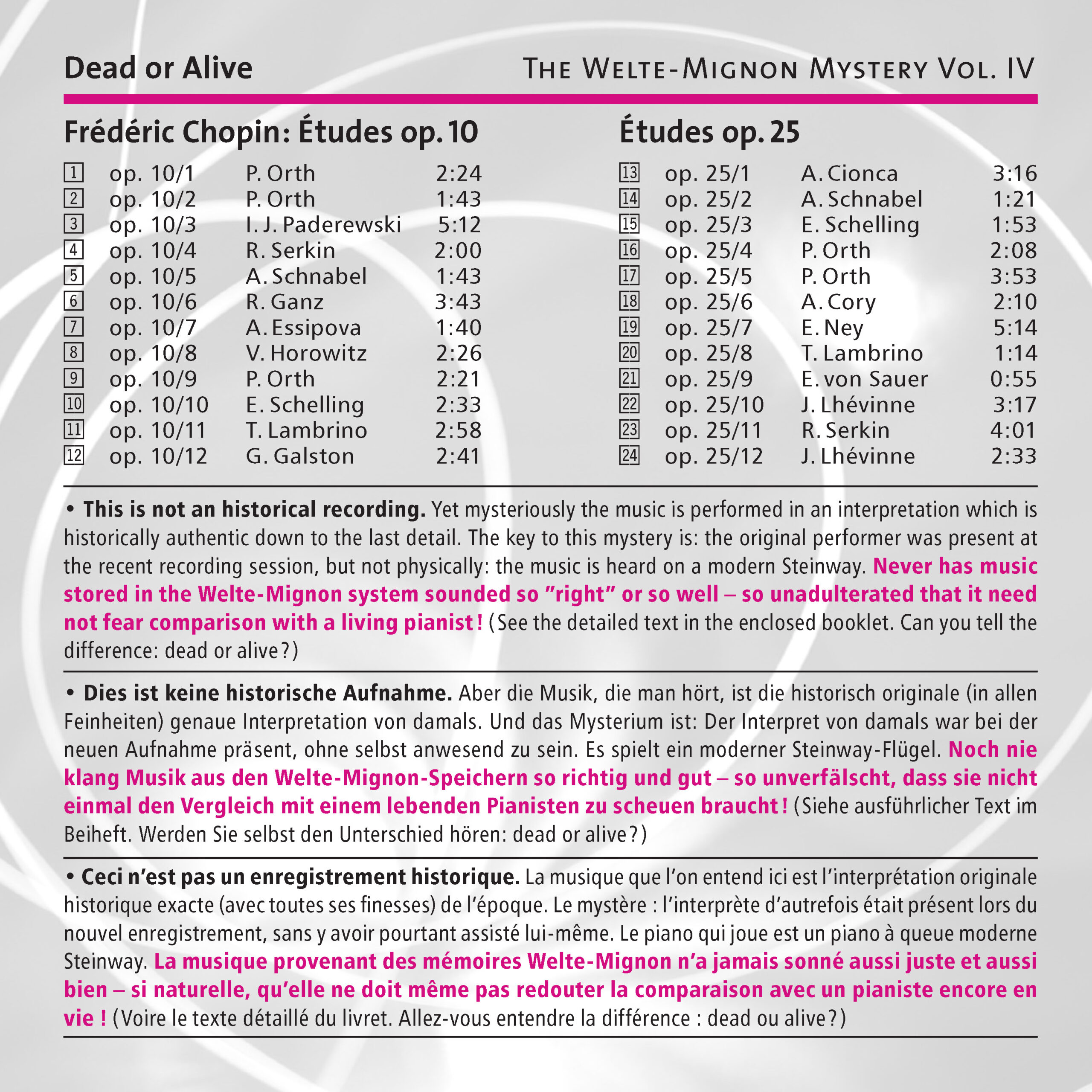
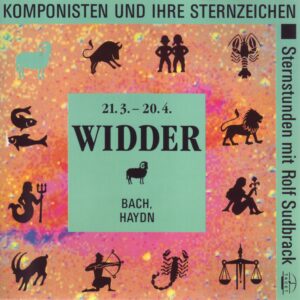
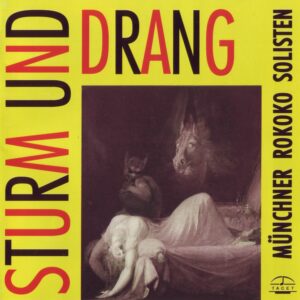
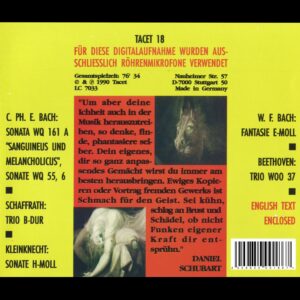
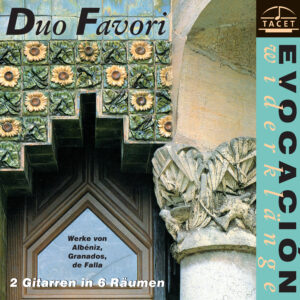
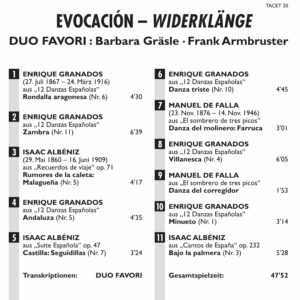
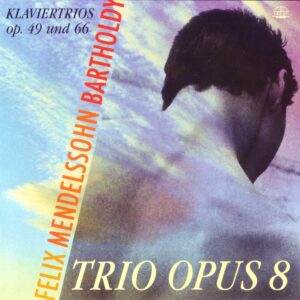
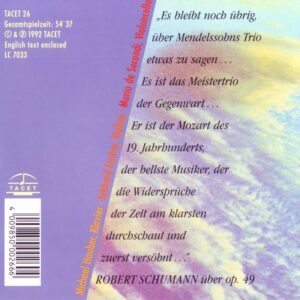
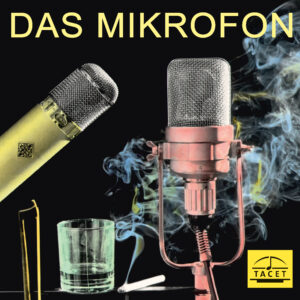
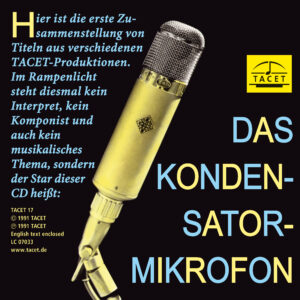
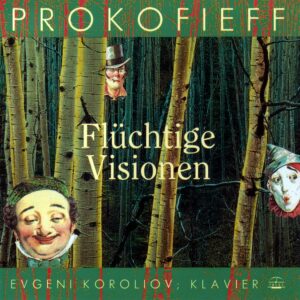
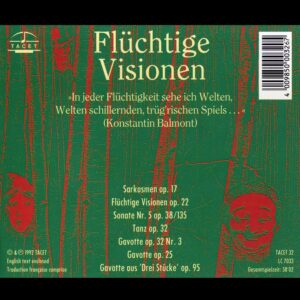
Pianiste –
THE LESSONS OF THE PAST
The Magic of the Welte-Mignon
Debussy, Ravel, Mahler, Einecke, Grieg, Granados… spielen ihre Werke.
Would you like to hear Ravel, Debussy, Strauss, Saint-Saëns, and Reger playing their own works on a modern piano? And how about a "perfect" restoration of the interpretations by the early Horowitz, Fischer, Lhévinne, and Schnabel? The German label Tacet offers an anthology of rolls recorded by the Welte-Mignon system. The system is simple, but the process of reproduction is particularly complex! In fact, the pieces played by the composers themselves were digitized from the device invented in 1904 by the company Welte & Sons of Freiburg. The perforated rolls of the time captured the touch, pedal play, and the finest nuances. Today, all that is needed is to transfer these recordings onto a concert piano.
It is therefore a real shock to hear, in optimal listening comfort, Debussy’s Children's Corner and some Préludes, as well as Ravel’s Sonatine and Valses nobles et sentimentales, all played by the composers themselves. What lessons can we take away from this? First, the astonishing freedom with which these two geniuses approach their scores! It is also true that Ravel’s playing is not always flawless… But if we look beyond the purely technical aspect, we notice the extreme finesse and personalization of their touches. The dynamics are generally soft, with the fingers seeming to merely caress the keyboard. No brutality whatsoever. The clarity and gentleness are astounding. Other examples are equally striking, such as the two volumes dedicated to Brahms’ works interpreted by Nikisch, Lhévinne, Samaroff, Ney, or Chopin’s Etudes played by Pachmann and Paderewski…
The virtuosity of these pianists is staggering, but even more surprising is the passion, the commitment, and sometimes even the coquettishness, the occasional unnecessary ornamentations that some perform almost as if they were tics. From all these master lessons, we learn that the strongest personalities only flourish after a visceral and profound understanding of the works. Schnabel in the waltzes of Josef Strauss and Josef Lanner (who would dare play this today?), Horowitz in 1926 in some Rachmaninoff Preludes, speak to us. Where does the charisma and charm of their interpretations come from? A mystery.
Every year, Tacet releases three or four new CDs from the Welte-Mignon archives. Worth collecting.
S. F.
_________________________________________________
Original Review in French language
LES LEÇONS DU PASSÉ
La magie des Welte-Mignon
Debussy, Ravel, Mahler, Einecke, Grieg, Granados… jouent leurs œuvres.
Vous aimeriez entendre Ravel, Debussy, Strauss, Saint-Saëns, Reger jouant sur un piano d’aujourd’hui leurs propres Oeuvres? Et que diriez-vous aussi d’une restitution « parfaite » des interprétations des premiers Horowitz, Fischer, Lhévinne et autres Schnabel? Le label allemand Tacet propose une anthologie des rouleaux gravés par le procédé Welte-Mignon. Le système est simple, mais le procédé de restitution particulièrement complexe! En effet, les pièces jouées par les compositeurs eux-mêmes ont été numérisées à partir de l’appareil inventé en 1904 par la firme Welte & Fils de Fribourg. Les rouleaux perforés de l’époque ont capté le toucher, le jeu des pédales et les nuances les plus fines. Il suffit aujour¬d’hui de transférer ces témoignages sur un piano de concert.
C’est donc un véritable choc que d’entendre dans un confort d’écoute optimal les Children’s Corner et quelques Préludes par Debussy, mais aussi la Sonatine, les Valses nobles et sentimentales de Ravel sous les doigts des compositeurs. Quelles leçons en retirons-nous? D’abord, l’étonnante liberté de ces deux génies vis-à-vis de leurs partitions! Il est vrai aussi que le jeu de Ravel n’est pas d’une justesse infaillible… Mais si l’on dépasse l’aspect purement technique, on s’aperçoit de l’extrême finesse et de la personnalisation des touchers. Les dynamiques sont généralement faibles, les doigts semblent effleurer le clavier. Sans aucune brutalité. La clarté et la douceur sont stupéfiantes. D’autres exemples sont frappants comme ces deux volumes consacrés à des œuvres de Brahms interprétées par Nikisch, Lhévinne, Samaroff, Ney ou bien les Études de Chopin par Pachmann et Paderewski…
La virtuosité des pianistes est stupéfiante, mais on est plus surpris encore par la fougue, l’engagement, parfois même les coquetteries, les ornementations intempestives que certains provoquent comme des tics. De toutes ces leçons de maîtres, on retient que les personnalités les plus fortes ne s’épanouissent qu’après une compréhension viscérale et profonde des œuvres. Schnabel dans les Valses de Josef Strauss et de Josef Lanner (qui oserait jouer cela aujourd’hui ?), Horowitz en 1926 dans quelques Préludes de Rachmaninov nous interpellent. D’où proviennent le charisme et le charme insensés de leurs lectures? Mystère.
Chaque année, Tacet publie trois ou quatre nouveaux CD des archives Welte-Mignon. À thésauriser.
S. F.
Fono Forum –
Dead men playing
Since Telefunken released the first monaural 25-centimeter LPs with transfers from piano rolls in 1957, efforts to rediscover the treasure trove of nearly 20,000 paper sound carriers from nearly three decades have never ceased. These rolls preserve the performances of the most famous pianists of their time in a sound quality far surpassing the capabilities of contemporary shellac records. Now, TACET continues its series "The Welte-Mignon Mystery," which began in 2004, with volumes 4 and 5. When listening to Frieda Kwast-Hodapp performing the Telemann Variations on the new Reger CD, the illusion is already quite compelling—it feels as though a living, breathing person is sitting at the keys on the other end, not just a mechanical box. This even raises serious doubts about whether the widely held belief among experts and collectors—that piano rolls inherently have less documentary value—can still be upheld without reservation.
But these two new CDs are not just technically fascinating; their musical content is equally compelling. The Reger disc confirms Kwast-Hodapp’s reputation as one of her time’s great pianists. Her performance is vibrant and generous, powering through the étude-like early variations (after some initial rubato flourishes), sustaining tension, and building the finale to a gripping climax. The recording is rounded out by ten pieces from Reger’s own 1905 roll recordings—selections from his Humoresques (Op. 20), Intermezzi (Op. 45), Silhouettes (Op. 53), and Aus meinem Tagebuch (Op. 82). Some are familiar, but hearing them all together deepens admiration for Reger’s piano playing, which—like Kwast-Hodapp’s—always prioritized the grand architectural sweep over mere detail.
The second Mystery installment is nothing short of a revelation: It assembles 19 of Chopin’s 24 Études (Op. 10 & 25), performed by 15 different pianists—from legends like Pachmann, Essipowa, Paderewski, and Sauer to rising stars of the day, including a young Schnabel, Horowitz, Elly Ney, and Serkin (all heard here as twentysomethings—though the birth years listed for Paderewski and Horowitz are incorrect). For the remaining five études, pianist Peter Orth steps in, replacing the player mechanism. The result? A “Dead or Alive” guessing game—can you tell which performances come from the rolls and which are newly recorded?
It’s not too hard to tell—but not because of sound quality. The difference lies in pianistic style: Orth plays with noticeably straighter, more studious phrasing than the “dead men” (and women). At 23, Schnabel sounds surprisingly fidgety, far less “classical” than Horowitz, of all people. Serkin dazzles in the “Tempest” Étude, while Emil Sauer lives up to his reputation as a virtuoso elegance. Elly Ney’s C-sharp minor Étude is so drenched in rubato that barely a note lands where expected. And then there’s the real shock: In the famous E-major Étude, an obscure pianist from Freiburg effortlessly holds her own against the deified Paderewski—just one of many curiosities this CD offers. A feast for the ears, and not just for piano aficionados and historians!
Ingo Harden
Pizzicato –
TACET never runs short of bold ideas when it comes to doing things properly. They simply engaged pianist Peter Orth to record the five missing préludes from Chopin’s Op. 10 and Op. 25 cycles, absent from the Welte-Mignon rolls. The result? A fascinating, if uneven, dialogue—where the great pianists of the past alternate with Orth, lending these two cycles a uniquely compelling shape.
RéF
Audiophile Audition –
This is the latest continuation of "The Welte-Mignon Mystery" - from Germany′s Tacet label - Volume IV to be exact.
We′ve reviewed in the past here several different CDs made from the amazing Welte piano rolls. (Put Welte in our site search engine.) I don′t believe the earlier volumes of this new series carried the statement on the jewel box that the results are so "right" that "it need not fear comparison with a living pianist." That is the point of the Dead or Alive title of this CD.
To summarize, the Rube Goldbergish pneumatic-based Welte-Mignon recording system, originally perfected in the 1890s!, was far ahead of all other piano roll approaches in fidelity to the original performances, and 100% better than the scratchy gramophone and cylinder records of the period. The "registration" (recording) equipment for the rolls, which had been set up in Leipzig, Freiburg and New York City, is long gone. But when the few remaining "vorsetzer" mechanisms - with their 88 little mechanical fingers - are perfectly adjusted and rolled up to the keyboard of a modern Steinway grand, the resulting performance can be recorded in modern stereo and it is extremely close to that of a live performer at the keyboard. But not quite, at least to my ears.
But first, the unique idea behind this particular collection of Welte rolls: In going thru the approximately 4500 selections which exist in the Welte catalog, producer and Tacet CEO Andreas Spreer discovered many Welte recordists had chosen to register one of the Chopin Etudes. In fact, only five were missing to complete both opus numbers of the Etudes. He engaged pianist Peer Orth to record those five on the same Steinway used with the Welte vorsetzer to reproduce all the long-dead pianists′ rolls. The same digital recording equipment was used to record both the "alive" and the "dead" selections.
Some of the past pianists represented are forgotten today, but a couple whose style is identifiable do sound like the standard recordings they also made. The one Etude performed by Horowitz sounds exactly like his precise and virtuoso style. The job of making a comparison between the alive and dead would have been easier if just one single Etude on a Welte roll had also been performed by Orth. But I tackled the listening comparison , moving from track to track to see if the five alive tracks stood out in any way from the dead tracks. My summary of the distinctions comes down to two qualities:
First, there is still a somewhat too-perfectly precise rhythm and phrasing on the rolls - the live performances having a more human flow and very slight departures from strict time.
Secondly, there is the more easily heard difference in dynamics - especially the attack on notes at highest volume level. The Welte rolls sound rolled off in this regard at both ends of the dynamic range. Extremely soft ppp passages seem to be upgraded to pp passages, and at the other end, there are simply no really loud piano climaxes - they sound compressed compared to what is heard from live pianist Orth. For example, the Welte roll of Chopin′s Revolutionary Etude, by pianist Galston lacks the fortissimo climaxes that make this work so compelling.
It is true, as the note booklet states, that most of the previous Welte reissues were faulty in some regard and failed to portray the accurate sound possible with the system. Along these lines, Tacet′s CD has almost no noise from the mechanism - as do most of the previous reissues. However, about eight years ago Telarc released "A Window in Time" - two CDs of Welte rolls cut by Rachmaninoff. (We have them on our 1998 and 99 Best of the Year Lists in the Archives.) But instead of using the original mechanical system, the information on the piano rolls was transferred to digital computer files and eventually fed into a Bösendorfer 290E Reproducing Piano to be recorded. The quality of these three dozen tracks is quite similar to the Tacet CD, though I hear less of the "too-perfect" quality. But compare the final track of the series - Rachmaninoff playing Chopin′s Scherzo in B-flat minor - with the Revolutionary Etude on the Tacet disc. The big climaxes are twice as loud and strong on the transfer using the Bösendorfer and digital technology, and I believe would stand up better compared to a live pianist′s new recording of the piece.
The unusual Tacet CD remains fascinating listening nevertheless.
John Sunier